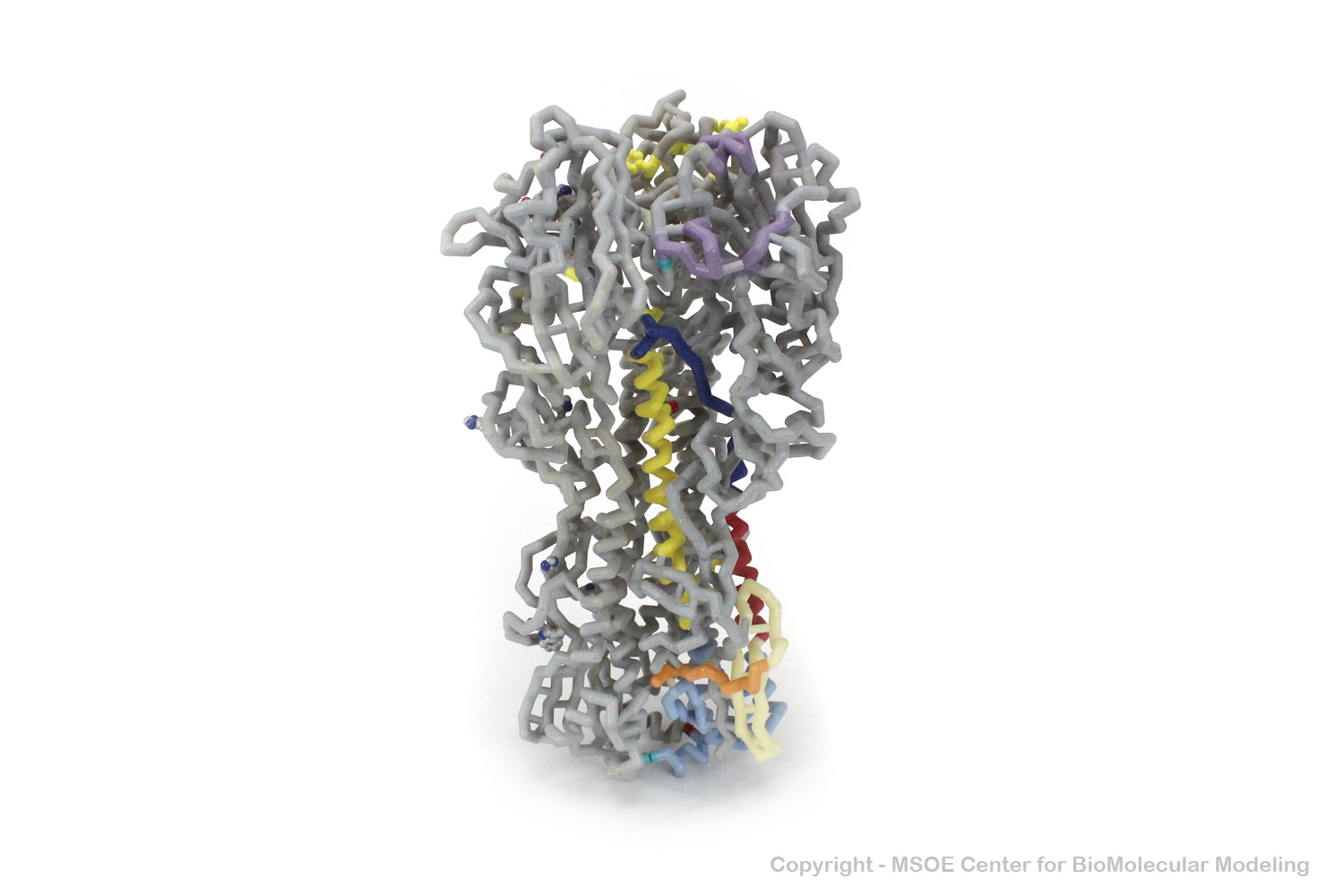User:Mark Hoelzer/Sandbox1
From Proteopedia
< User:Mark Hoelzer(Difference between revisions)
| (One intermediate revision not shown.) | |||
| Line 1: | Line 1: | ||
| - | ==3D Printed Physical Model of | + | ==3D Printed Physical Model of Hemagglutinin== |
| - | Shown below is 3D printed physical model of | + | Shown below is a 3D printed physical model of Hemagglutinin |
| + | |||
| + | [[Image:Hemagglutinin_1_centerForBiomolecularModeling.jpg]] | ||
| - | [[Image:Cbm_hemoglobin1.jpg]] | ||
| - | [[Image:Cbm_hemoglobin2.jpg]] | ||
====The MSOE Center for BioMolecular Modeling==== | ====The MSOE Center for BioMolecular Modeling==== | ||
| - | [[Image:CbmUniversityLogo.jpg | left | | + | [[Image:CbmUniversityLogo.jpg | left | 100px]] |
The [http://cbm.msoe.edu MSOE Center for BioMolecular Modeling] uses 3D printing technology to create physical models of protein and molecular structures, making the invisible molecular world more tangible and comprehensible. To view more protein structure models, visit our [http://cbm.msoe.edu/educationalmedia/modelgallery/ Model Gallery]. | The [http://cbm.msoe.edu MSOE Center for BioMolecular Modeling] uses 3D printing technology to create physical models of protein and molecular structures, making the invisible molecular world more tangible and comprehensible. To view more protein structure models, visit our [http://cbm.msoe.edu/educationalmedia/modelgallery/ Model Gallery]. | ||
Current revision
3D Printed Physical Model of Hemagglutinin
Shown below is a 3D printed physical model of Hemagglutinin
The MSOE Center for BioMolecular Modeling
The MSOE Center for BioMolecular Modeling uses 3D printing technology to create physical models of protein and molecular structures, making the invisible molecular world more tangible and comprehensible. To view more protein structure models, visit our Model Gallery.


